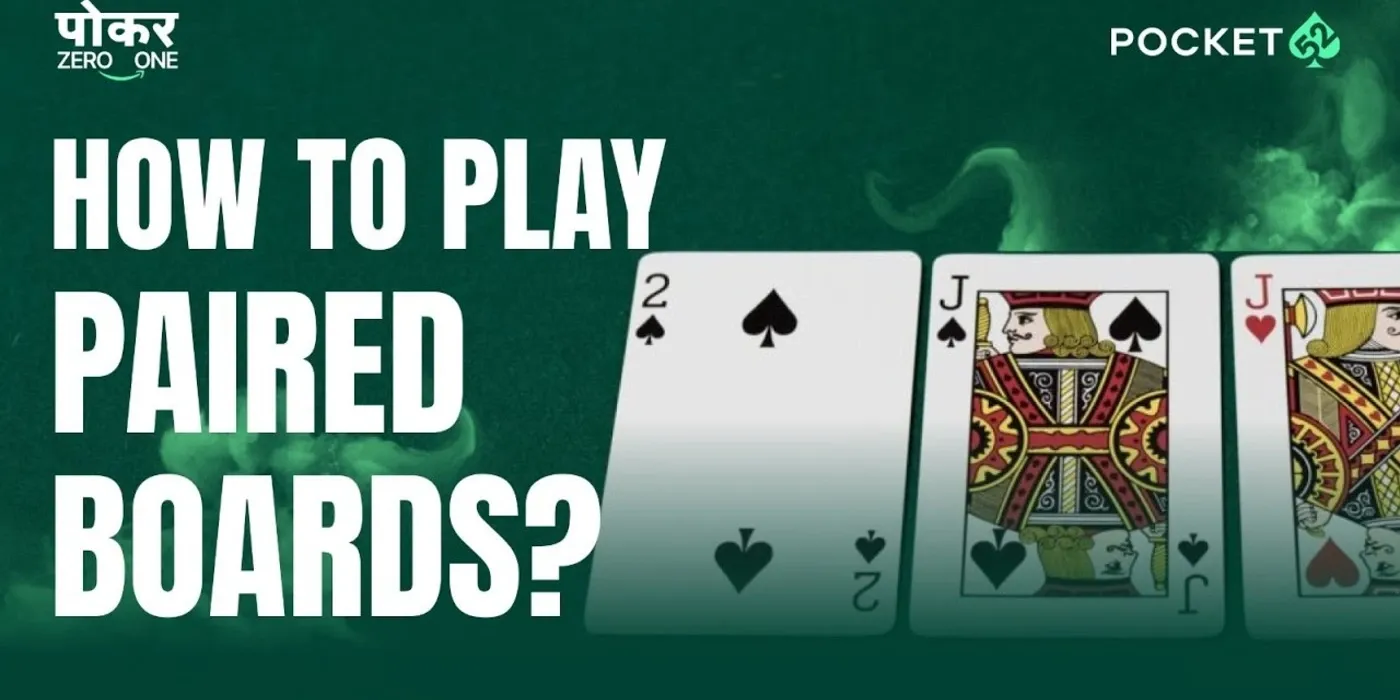- Home >
- Poker World >
- How to Play Paired Boards in Poker?

How to Play Paired Boards in Poker?
Let’s talk about paired boards in poker, what they are and how to approach them.
Table of Contents
A paired board in poker refers to a situation where the community cards contain two of the same rank, for example, two sevens or two fives. So how should you approach this kind of poker board?
Example of Paired Poker Board
Now imagine you’re playing poker and the board shows 7♠ 7♦ 5♣. What should your next move be?
Your opponent might have a full house with a hand like 75. They could also just have trips (three of a kind), or maybe nothing at all. But since poker is a game of incomplete information, you can’t know your opponent’s hand for sure. So, how do you approach this situation?
This can be a tricky poker scenario, and it’s important to play it very carefully.
Don’t Chase Draws on Paired Poker Boards
The first thing to remember in these poker situations is do not chase draws on paired boards. Let me break it down.
Imagine you’re holding 6♣8♣ or 9♠8♠ or even 4♦6♦, and the board comes 7♠ 7♦ 5♣. You might be tempted to think, “Just one more card and I’ll have a straight!”
So you keep putting chips into the pot on the flop, turn, and river hoping to hit that straight. But this is not the right move in poker.
You need to be careful.
Of course, you should observe how your opponent is playing the hand, because in poker they might be trapping you with a full house.
So stay alert and don’t get emotionally attached to your draws in these kinds of poker board situations.
Understand the Texture of the Poker Flop
Another very important thing in poker strategy is: What kind of flop is it? What strength does it represent?
Let me give you a poker example.
Suppose you’re in the big blind, the last to act. A player from early position raises, and you just call. The flop comes:
A♠ A♦ 4♣
Now you might be thinking:
“Should I bluff here?”
“Did I hit something like a four?”
“Let me put chips in.”
But that would be a mistake in poker. Why?
Because the two Aces on the board fall within your opponent’s likely range. Remember—they raised pre-flop from early position, so there’s a decent chance they have an Ace.
If you jam here, they’ll show the Ace, and you’ll lose your chips.
So in this poker hand, you should look to control the pot and not invest too much money.
Same Poker Scenario, Different Texture
Now let’s tweak the board a bit. Suppose the flop comes:
A♠ 10♣ 2♦
Your opponent could still have an Ace, but since you’re in the big blind, there’s also a good chance you have a deuce.
So even if they raise, you could re-raise, representing that deuce and potentially force a fold.
This is why it’s so important in poker to understand the board texture and approach the hand based on position and perceived ranges.
Final Poker Tips for Playing Paired Boards
The next time you’re in a poker hand with a paired board:
- Decide whether or not to go for value,
- But do not blindly chase your draws,
- And most importantly, don’t throw your chips around carelessly.
Every board tells a story, master it on the Pocket52 poker app and play with real players, real stakes.
 Call support
Call support RNG certified
RNG certified Responsible gaming
Responsible gaming Safe & secure payments
Safe & secure payments ISO certified company
ISO certified company
